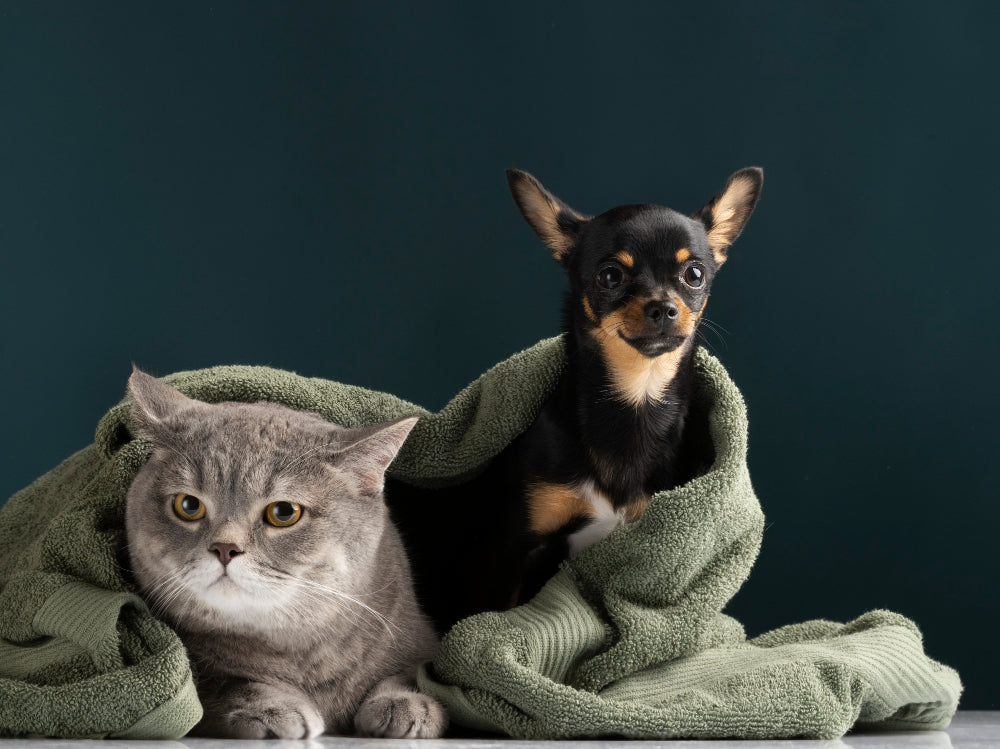
Monsoon Skin Issues in Pets And How to Handle Them Naturally
Share
Rainy days might be a vibe, but they also bring a messy side, especially for pets. Damp fur, dirty paws, and that musty smell after a walk in the rain. Underneath it all, the monsoon season is often harsh on their skin, even when it doesn’t look like anything’s wrong at first.
If you’ve noticed your dog or cat scratching more than usual during this season, or if their fur feels a little different, you’re not alone. The rainy months come with a whole bunch of skin-related concerns for pets, most of which don’t get noticed until they start causing real discomfort.
Why Skin Problems Are More Common During Monsoon
Here’s the thing about this season: it’s not just the rain. It’s the moisture that stays. Trapped humidity, less sunlight, and longer periods of dampness all create a perfect environment for infections and irritation.
Pets with thicker coats hold moisture longer, especially if they aren’t dried properly after a walk or bath. Even pets that stay mostly indoors can be affected, just walking over a wet patch on the balcony or licking their paws after stepping outside is enough to cause issues.
Common problems include:
-
Fungus infections, particularly on the paws, stomach, and in skin folds
-
Itchy areas, sometimes with loss of fur
-
Dandruff or dry skin
-
Redness or hotspots, which can spread quickly
-
Ticks and fleas, usually found in damp areas
Some pets are more prone to these problems, like those with floppy ears, wrinkles, or allergies. But even healthy pets can get affected if care isn’t consistent.
Signs Something’s Off
Most pet parents notice something's wrong only when the scratching becomes constant or when there’s visible redness. But there are smaller signs to pay attention to:
-
A change in the smell of their fur (that “wet dog” smell lasting longer than usual)
-
Dull or greasy coat
-
Licking the same area of the body again and again
-
Flaky skin appears during brushing
-
A sudden dislike to be touched in certain areas of their body
If any of these show up, don’t ignore them. Early action is key to preventing infections from spreading or getting worse.
Gentle, Natural Ways to Keep Skin Healthy
The best part? Most skin problems during the monsoon can be managed and even prevented through simple, natural methods. You do not always need to go to a heavy medicated shampoo or sprays right away.
Start by keeping your pet completely dry after every walk. Not just towel-dried but actually dry. Use a clean towel, followed by a pet dryer or a fan if needed. Pay extra attention to the paws, underarms, and tail area.
And then there is grooming. Brushing out your dog or cat regularly will not only help get rid of loose hair but also let the skin breathe. Plus, it helps you to identify areas where the skin may feel rough, hot, or irritated.
For baths, don’t overdo it. Stick to once every two to three weeks during monsoon, using a mild, natural shampoo, preferably one with ingredients like neem, oatmeal, or aloe vera. These soothe the skin and also have anti-bacterial or anti-fungal properties.
Neem water rinses are also a great in-between option. Just boil neem leaves in water, let them cool, and use them as a final rinse after a regular bath. It helps calm irritation and keeps the skin fresh.
Wipes can be useful too. Choose pet-safe, alcohol-free wipes, especially after walks. They help clean mud or allergens without drying out the skin.
And don’t forget bedding. If your pet’s bed or blanket gets even slightly damp, wash and dry it right away. Moist fabric is one of the most common hidden causes of skin issues especially for pets that love to snuggle into corners.
When to See a Vet
If your pet's skin is swollen, produces pus, has a lot of hair loss, or if it appears that your pet is restless or in pain a vet visit is necessary. Some skin infections may reproduce rapidly or create larger problems if they are not addressed. It’s always better to be cautious.
Also, if you’ve tried home care and nothing’s improving within a few days, it’s worth getting a proper diagnosis. Sometimes what looks like a fungal patch could be an allergy or even a parasitic issue.
A Little Daily Care Goes a Long Way
The monsoon isn’t an easy season for pets. It’s wet, sticky, and full of hidden triggers that can irritate their skin. But with a little extra effort and some natural care it’s absolutely possible to keep your pet feeling clean, calm, and itch-free.

